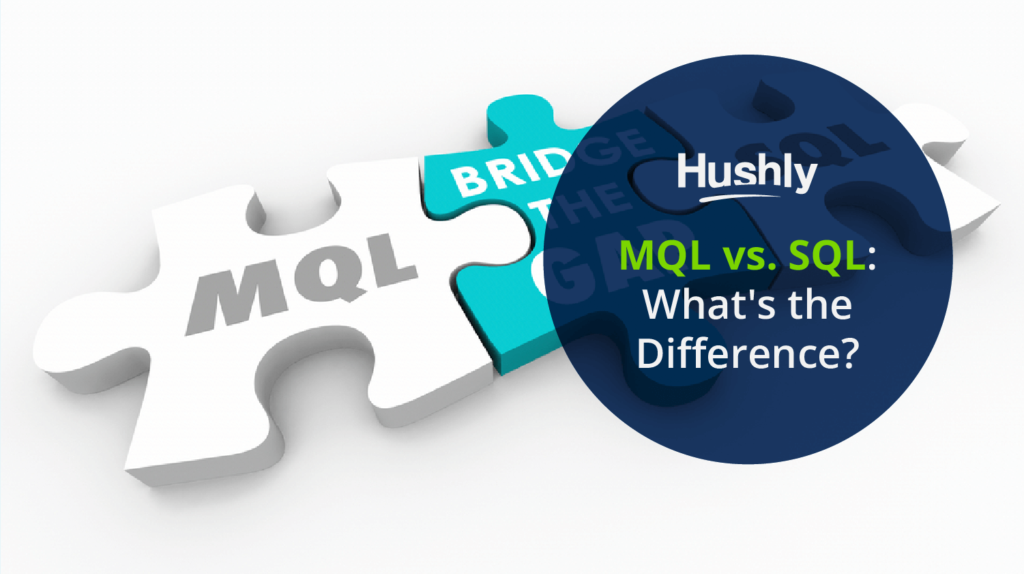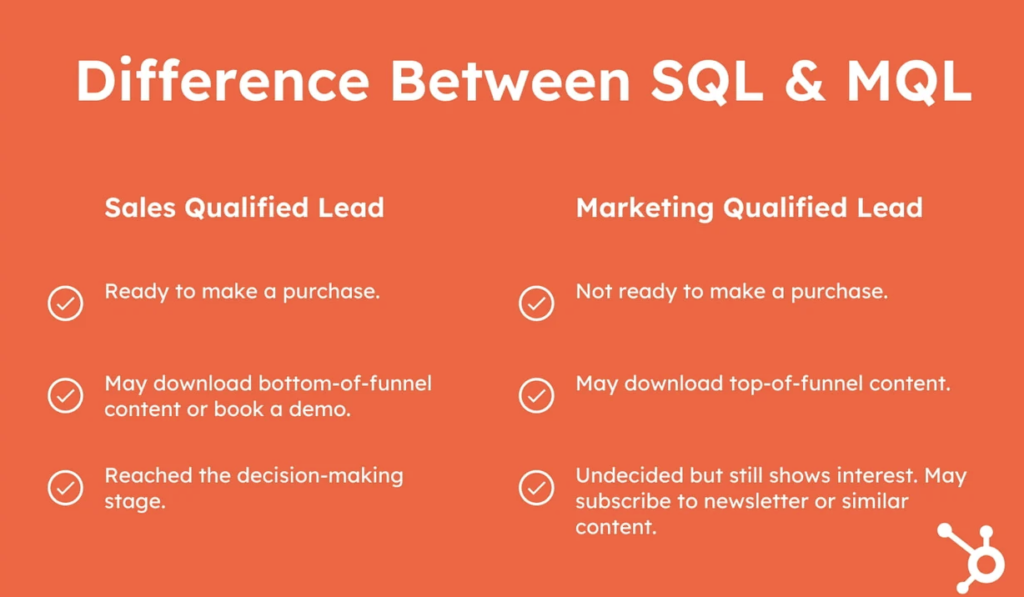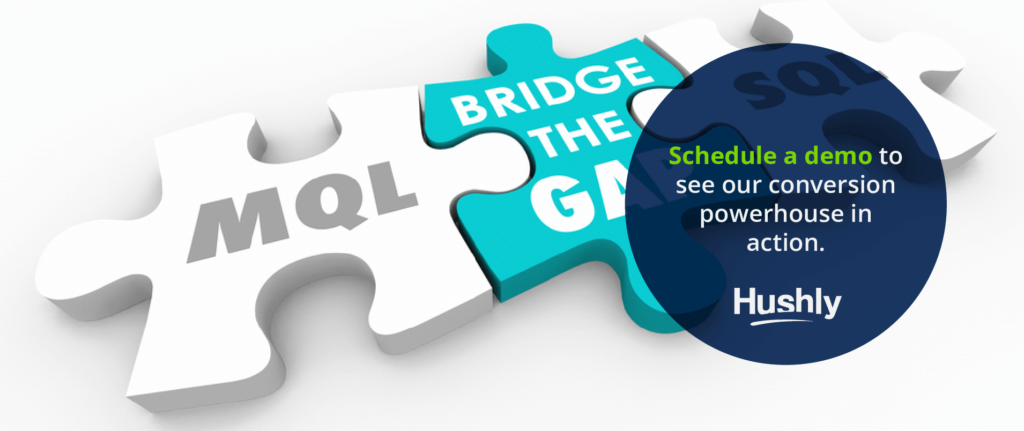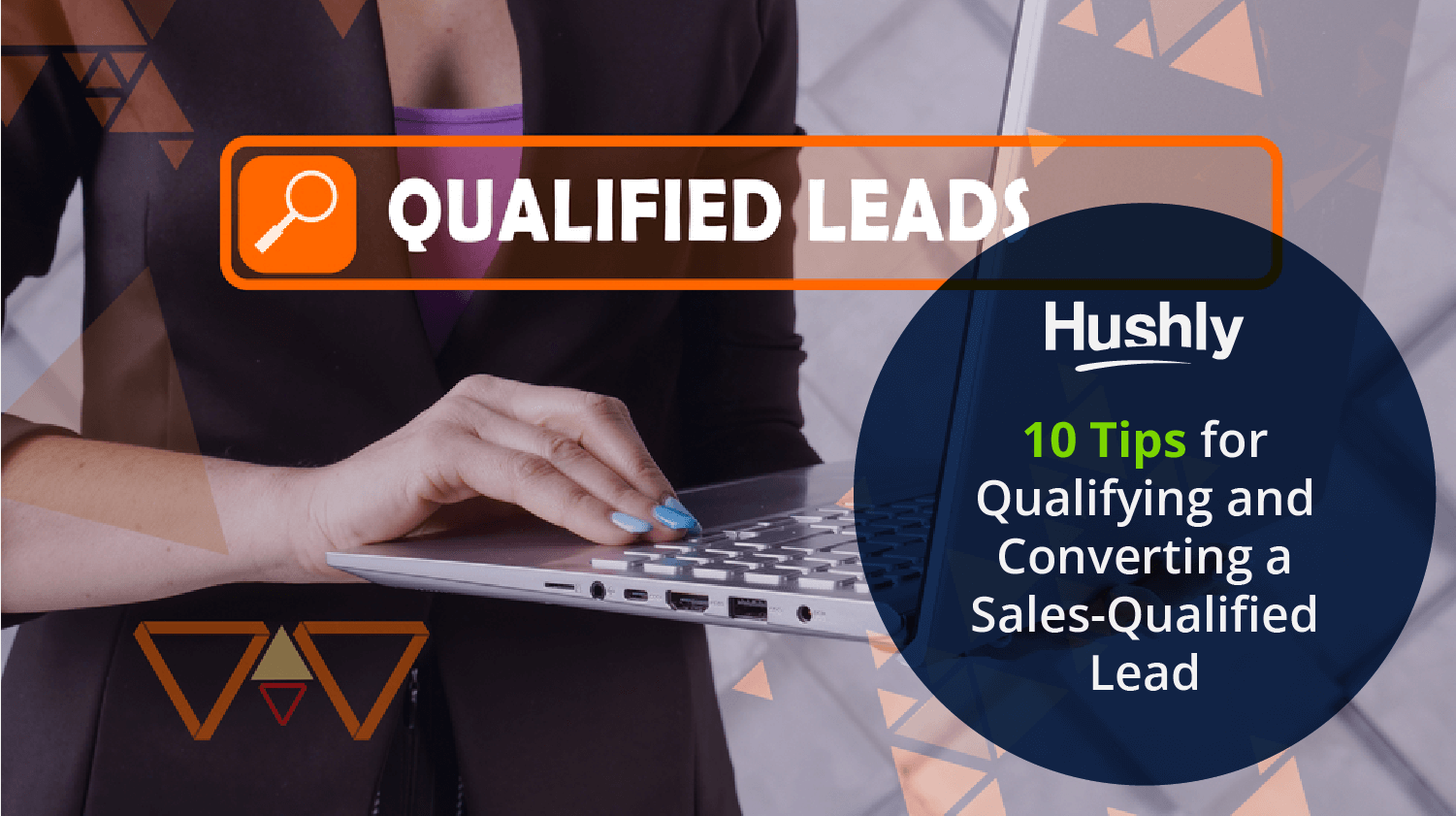Jumping to the last page of a book isn’t as impactful as when you have a chance to read the character exposition, plot buildup, and the epic final battle. The same is true for converting your leads.
If you skip to the conversion without the buildup, your leads may not respond to your sales pitch as you hoped.
In contrast, you’ll see incredible results when you can build the tension and present your products in the best light.
How do you know it’s time for the final reveal? Knowing that starts with understanding the difference between MQL vs. SQL.
Discover what these terms mean and how to seamlessly move your leads from the first chapter to the last.

Why Does Understanding MQL vs. SQL Matter?
Marketing and sales qualified leads are tags marketers give to leads to indicate a lead’s readiness for conversion, ensuring you make the most out of your marketing investment.
Converting a lead costs money, especially if you’re using account-based marketing. You have investments in personalization, educational materials, and even sales calls. It also costs valuable time.
If you move too soon on a new lead and try to convert it, you may earn a no when that same lead, with proper nurturing, may have otherwise said yes.
The SQL vs. MQL tags help marketers understand when a lead moves from looking for products to being ready to check out, so you can invest your time and energy where it will be most impactful while personalizing your marketing strategies for each stage.
Here’s a deeper look at the MQL vs. SQL meaning.

Image from HubSpot
Decoding the Marketing Qualified Lead (MQL)
The marketing qualified lead (MQL) has shown demonstrable interest in your business. On average, 25% of new leads in the IT and management service industry become marketing-qualified leads.
However, even though an MQL has the potential to convert, they aren’t quite at that point yet.
Instead, that lead is qualified for the marketing team to begin nurturing. Nurturing includes educating, generating demand, and warming the lead up for conversion.
MQL Indicators
Here are several ways to identify when a lead becomes a marketing-qualified lead and is ready for nurturing:
- Fits your target audience profile: The lead has the finances, buying power, and needs, making them a good match for your products.
- Shown interest in your products: The lead has demonstrated interest in your products by visiting your site multiple times, subscribing to your newsletter, following you on social media, attending a webinar, and asking about the products.
- Engaged with marketing content: The lead continues actively engaging with marketing content, like opening emails, downloading eBooks, and liking blog posts.
While these signs show they may be seriously considering your products, none of these signs indicate they have reached the point of purchase. Rather, these are signs a MQL has moved to the SQL stage.
How to Respond to an MQL
What should you do when you have an MQL?
When a lead becomes an MQL, you aim to move them from a marketing-qualified lead to a sales-qualified lead. To do that, you will want the lead to acknowledge a definite need and readiness to buy.
Use educational content on your socials, blog, and email to create a demand for the product and help them acknowledge the need. You will also build trust so that once the lead recognizes their need, they will trust your company enough to buy from you.
Your call-to-action will also reflect this stage in the buyer’s journey. Since the lead isn’t ready to buy, you avoid high-commitment CTAs like “buy now.” Instead, promote small commitments, like joining a webinar or scheduling a free trial.
Decoding the Sales Qualified Lead (SQL)
Your marketing-qualified lead finally acknowledges their need, they have the funds to buy, and they are ready to act immediately. They have now advanced from marketing-qualified leads to sales-qualified leads.
Sales-qualified leads are the ones who are ready to move to the checkout line and close the purchase. However, the leads don’t always take those last few steps alone. That’s where your strong sales team comes into play.
Once a lead shows signs of readiness, the lead moves to the sales team, and the sales team begins reaching out to close the deal.
SQL Indicators
Here are several signs a lead has moved from an MQL to an SQL:
- Shows interest in buying: The lead has downloaded a demo, signed up for a free trial, or directly told a sales representative they want to make a purchase.
- Has a need, authority, and budget: The lead has a known need, authority to buy, and the budget to buy.
- Matches the timing: The lead is ready to buy at that moment and is not planning for a distant event or future purchase.
How to Respond to a SQL
Once you see these indicators, your sales team can begin pushing sales content. This might include an email campaign offering specific products versus educating them on your services. It might also include a direct sales call, which can be especially effective for account-based marketing where you want to take a personable approach.
Your goal is to close quickly once a lead becomes an SQL. The longer you let this stage go, the greater the chance of the lead losing interest or finding a different provider.
How to Tell When a MQL Turns into a SQL
You don’t need a crystal ball to track when a marketing-qualified lead is sales-ready.
It’s a simple numbers game. At least, with the help of AI, tracking leads becomes simple. Most marketers use a system called lead scoring.
This is how lead scoring plays out:
Each action a lead takes has a point value. The point value can be negative or positive. For example, reading emails and downloading whitepapers have positive values. However, ignoring emails or unsubscribing is a negative value.
AI automatically tracks a lead’s behavior, adding and subtracting points. Once the lead hits a designated benchmark, it passes from MQL to SQL.
Some items, like downloading a free trial, might automatically meet the score benchmark and move a lead immediately to the SQL team.
With this automated system in place, the marketing and sales team can receive notifications when a new lead is ready, quickly picking up the lead’s journey with the next natural step toward conversion.
What Is the MQL vs. SQL Optimal Conversion Rate
Your MQL to SQL conversion rate depends on several factors, including the quality of leads, alignment between marketing and sales teams, and the effectiveness of lead nurturing efforts.
Generally, a healthy MQL to SQL conversion rate can range from 10% to 30%, with the average falling at 13%. This number can vary significantly based on industry, target audience, and business model.
Marketing and sales teams should work together to define MQLs’ and SQLs’ criteria to align their goals. This collaboration ensures that you appropriately qualify leads, and you hand off the lead between teams at the right stage of the buyer’s journey.
Convert More of Your MQLs to SQLs
Do you want to turn your lead conversion process into a well-oiled machine?
Hushly’s all-in-one conversion cloud has the tools you need to generate leads, score the leads, and move them seamlessly from MQL to SQL.
With our system running in the background, you can focus on converting those leads into loyal customers.
Schedule a demo to see our conversion powerhouse in action.




